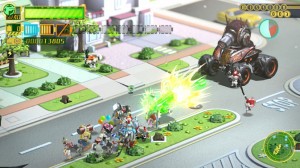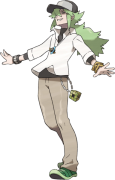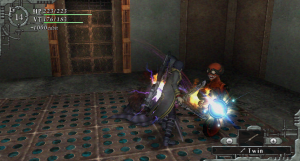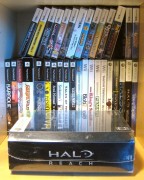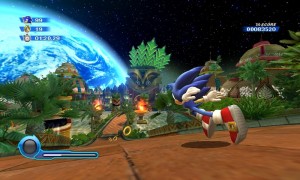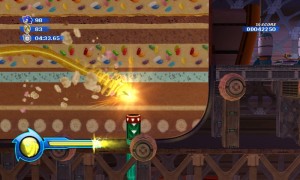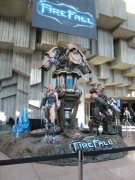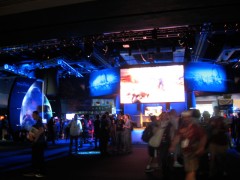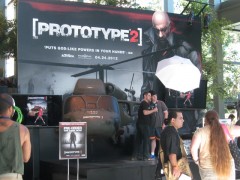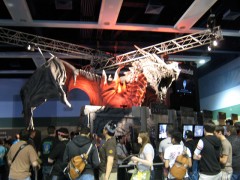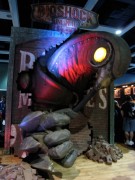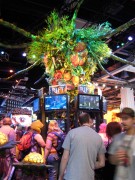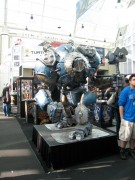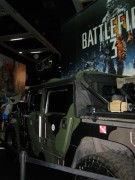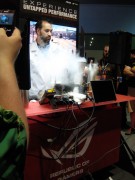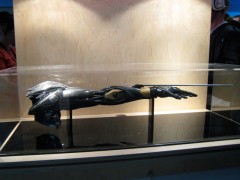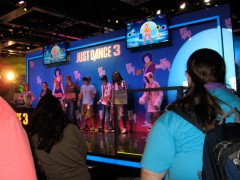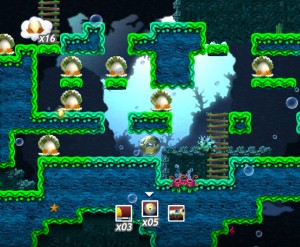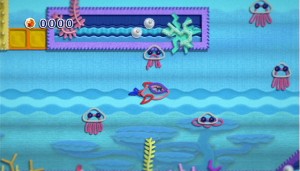I wasn’t excited for E3 this year. Of the games I knew that were coming out, there wasn’t much that I absolutely needed to see more of, and my anticipation for the as-yet-unannounced was low. It turns out that I was right to skip the Microsoft and Sony press conference streams, as there was practically nothing of interest to me in the liveblogs that I read (well, there was Halo 4, but I’m doing my best to avoid spoilers for it at the moment). The following day, I caved and watched Nintendo’s presser, but found it to be sorely lacking.
After several days’ worth of coverage, only one new game piqued my interest, and that was “Project P-100”, a crowd management action title, directed by Platinum Games’ Hideki Kamiya, that seems to have gotten barely any attention from the press at all. This game is similar to his earlier Viewtiful Joe in its Super Sentai aesthetic, and the basic concept of controlling a crowd that turns into weapons to beat giant villains is pretty awesome. The one thing about this game that came as a disappointment was that it is for WiiU, a system I don’t have any interest in getting. Other than that, and a welcome reminder that the 3DS Paper Mario exists and is on its way, there wasn’t anything for me.
In the meantime, I’ve been continuing on with my main personal goal for 2012: reducing my backlog as much as possible. April is the current record-holder month with seven games beaten, including one (Soul Nomad & the World Eaters) that took me nearly 45 hours, and the two Pinky:st DS titles that I reviewed in my previous post. Some highlights these past few months include the DS remake of Dragon Quest VI, massively moe and just plain charming doujin shop sim/dungeon crawler Recettear: An Item Shop’s Tale, bare-bones browser-based JRPG Parameters, fantastic expansion pack Tropico 4: Modern Times, and Pokemon White Version, which I’ve written about before and was top-notch all around.
There was also Halo: Combat Evolved Anniversary, played co-op with my Halo-detractor husband. We had a good time, playing the game with the new graphics and old soundtrack, though I have some quibbles regarding the former. The new maps are brightly lit compared to the original versions, which, along with the whole co-op thing, made the game’s scariest moment a bit less so. Also, some of the new character models were lacking, especially Sergeant Johnson and 343 Guilty Spark. More than anything, I’m now cautiously optimistic about Halo 4.
I also played a couple of platformers, namely The Legendary Starfy on DS and Ratchet & Clank for PS2. Starfy was a decent game with a lot of character, but it was also much wordier than I expected, with more cutscenes than is average for a platformer. Ratchet is not as good as its first-party brethren Jak & Daxter: The Precursor Legacy and Sly Cooper & the Thievius Raccoonus and also has some irritating bugs. However, the weapon/gadget system at its heart is well thought-out, and the storytelling, which is similar in tone to Jak and Sly, is enjoyable enough.
There have been a smattering of others, including the two Izuna games, mystery dungeons with an emphasis on humor and fanservice, and, on the negative side, vague endings that lack so much as a credit roll or “The End” text before dumping the player into Postgame Territory. I also beat the puzzle game RUSH and attempted to play EDGE, but the bad controls and mediocre design of the latter led me to quit. Finally, over the weekend I played through Breath of Death VII, a parody RPG that resembles an early Dragon Quest and contains jokes and references that range from the silly to the sillier; despite some design quirks, it’s well worth a play if you love the genre.
That’s it for what I’ve beaten these past few months. As for what I’m actively playing right now, I’m approaching the end of “The Journey”, aka the main game in Persona 3 FES. This RPG has been unlike most others I’ve ever played, in a good way, and I hope to write about it at length later on. I’m also playing Dance Dance Revolution again (SuperNOVA 2, specifically); after a long ordeal, a couple of new, working pads arrived yesterday.
Once I wrap up “The Journey”, I plan to put Persona 3 FES aside for awhile before taking on the bonus episode “The Answer”. Right now, I’m considering starting de Blob 2 and/or Dragon Quest Monsters: Joker 2 as my next game (or games). As usual, we’ll see.
